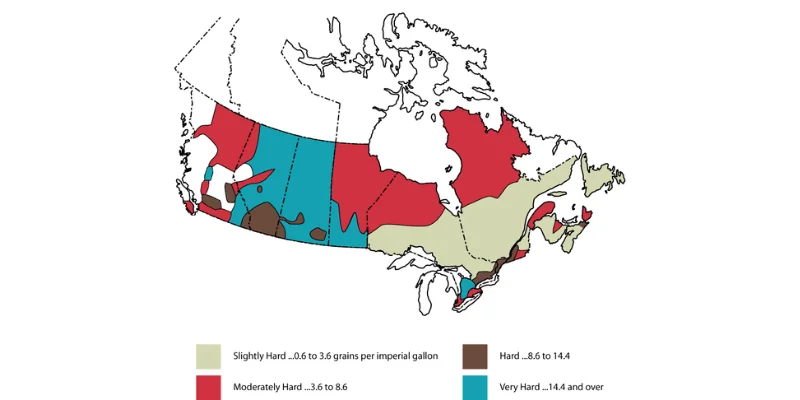
Hard water is a common issue affecting many households in Ontario. Understanding its causes and identifying regions most at risk can help you take the necessary steps to mitigate its effects. This article shares five primary causes of hard water and highlights the geographical regions most affected by this problem.
1. Mineral-Rich Soil and Rock Formations
Hard water is primarily caused by high concentrations of certain minerals, particularly calcium and magnesium. These minerals are naturally dissolved into the water as it moves through soil and rock formations. An area’s geological composition plays a significant role in determining the water’s hardness. Regions with abundant limestone, chalk, or gypsum deposits tend to have higher levels of these soluble minerals.
2. Groundwater Sources
Groundwater, which is water sourced from underground aquifers, often has a higher mineral content compared to surface water. As groundwater moves through mineral-rich layers of soil and rock, it picks up calcium and magnesium, leading to increased hardness. This makes groundwater-sourced water supplies more prone to hardness issues.
3. Rainwater Deposits
While rainwater is naturally soft, it can become hard water as it flows through the ground. During this process, it collects minerals from the soil and rock, particularly in regions with high mineral content. This transformation can occur quickly, resulting in hard water by the time it reaches household water systems.
4. Municipal Water Treatment Processes
In some cases, the processes used by municipal water treatment facilities can contribute to water hardness. While these facilities aim to provide clean and safe water, they may not always remove all the minerals that contribute to hardness. As a result, treated water can still contain high levels of calcium and magnesium.
5. Aging Plumbing Systems
Older plumbing systems can also contribute to water hardness. Pipes made from materials that leach minerals into the water, such as galvanized steel, can increase the mineral content of your household water supply. Additionally, scale buildup in pipes can exacerbate hardness issues over time.
Most At-Risk Regions in Ontario
Geographical regions most at risk for hard water in Ontario are typically those with significant limestone, chalk, or gypsum deposits and areas relying on groundwater sources. These regions often have higher levels of calcium and magnesium, contributing to the hardness of the water. Areas such as southern Ontario, including cities like Waterloo, Guelph, and Kitchener, are known for their high water hardness due to the prevalent geological conditions and groundwater sources.
Check out a map of water hardness levels across Canada here.
Contact Your Local ClimateCare for Softer Water Today
Understanding the causes of hard water and recognizing the most at-risk regions can help you take proactive measures to address this issue. If you’re experiencing hard water problems, consider installing a water-softening system to reduce the mineral content and protect your plumbing and appliances.
For professional assistance and tailored solutions, contact your local ClimateCare today. Our experts are here to help you manage hard water effectively.
“Have more questions about hard water? We answer them here.”
 Get A Quote
Get A Quote




